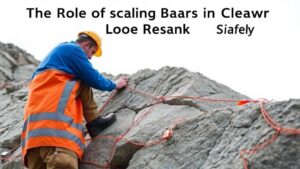How Early Prospectors Used Native Plants as Indicators of Ore Deposits
How Early Prospectors Used Native Plants as Indicators of Ore Deposits
The quest for mineral riches has historically driven human exploration and settlement patterns. From ancient times to the Gold Rush era of the 19th century, prospectors sought methods to identify potential ore deposits. One such innovative technique involved the careful observation of native plants. This article explores how early prospectors utilized flora as indicators of mineral deposits, focusing on the relationship between ecological indicators and geological phenomena.
The Relationship Between Plants and Minerals
Plants interact with their environment, particularly with soil and minerals, often reflecting the presence of underlying geological features. Certain plants thrive in mineral-rich areas, while others may indicate barren or less fruitful terrains. For example, halophytes, which are salt-tolerant plants, often grow in saline environments, indicating the potential for mineral deposits such as potash.
Ecological Indicators of Ore Deposits
Early prospectors observed specific plants that signaled potential mineralization. following categories illustrate how flora can act as ecological indicators:
- Indicator Species: Certain plants are known to accumulate heavy metals, such as lead, zinc, and copper. For example, the presence of Thlaspi caerulescens (Alpine pennycress) in an area was often a sign of underlying zinc and cadmium deposits.
- Vegetation Patterns: The type and density of vegetation can indicate soil composition. Grasses and shrubs may thrive in areas rich in minerals, while distinct barren patches can suggest mineral depletion due to mining activities.
- Geochemical Signatures: The chemical makeup of plants can provide insights into sub-surface mineralization. For example, studies show that plants in copper-rich soils often exhibit elevated copper concentrations in their tissues, acting as a biogeochemical signal to prospectors.
Historical Examples of Usage
Throughout history, various cultures have harnessed the knowledge of local flora to locate mineral deposits:
- Native American Practices: Indigenous tribes in North America utilized their extensive botanical knowledge to guide explorers. Some tribes recognized that certain plants indicated proximity to precious metals, sharing this information with early settlers and prospectors.
- The Gold Rush: During the California Gold Rush of the 1840s, prospectors noted that regions with abundant willows were often near gold deposits. This led to the saying, “Where the willow grows, gold flows”, encapsulating the usefulness of plant indicators during this era.
Scientific Validation of Plant Indicators
Modern research has substantiated many historical claims regarding the relationship between plants and mineral deposits. Scientific studies employing geobotanical mapping have shown statistical correlations between the presence of specific plants and metal concentrations in soil and water. For example, a study published in the journal Ecological Indicators confirmed that the accumulation of heavy metals in plants can directly correlate to the geological characteristics of their surroundings.
Practical Applications for Prospectors
Understanding how to leverage native plants as indicators of ore deposits can present significant advantages for modern prospectors. The following methods can enhance mineral exploration efforts:
- Field Surveys: Conducting thorough surveys of plant species in unexplored regions can guide initial mineral exploration efforts before extensive geological testing is undertaken.
- Soil Sampling: Collecting soil samples from areas with specific vegetation can yield valuable data on the geochemistry of the site.
- Integrating Technology: Utilizing remote sensing technologies to identify vegetation patterns can provide a more extensive analysis, particularly in hard-to-access terrains.
Conclusion
Early prospectors use of native plants as indicators of ore deposits exemplifies a marriage of ecological knowledge and practical mining techniques. This approach, rooted in observation and understanding of natural indicators, not only facilitated mining endeavors but also fostered a broader understanding of the environment. As mineral exploration evolves, the incorporation of traditional ecological knowledge alongside modern scientific practices presents a promising avenue for future discoveries. So, prospectors today can continue to benefit from the age-old wisdom of plants in guiding them toward potential mineral wealth.
For those in the field, actively engaging with botanical knowledge can enhance mineral exploration strategies, ensuring that history and nature guide modern practices toward sustainable and fruitful mining activities.



